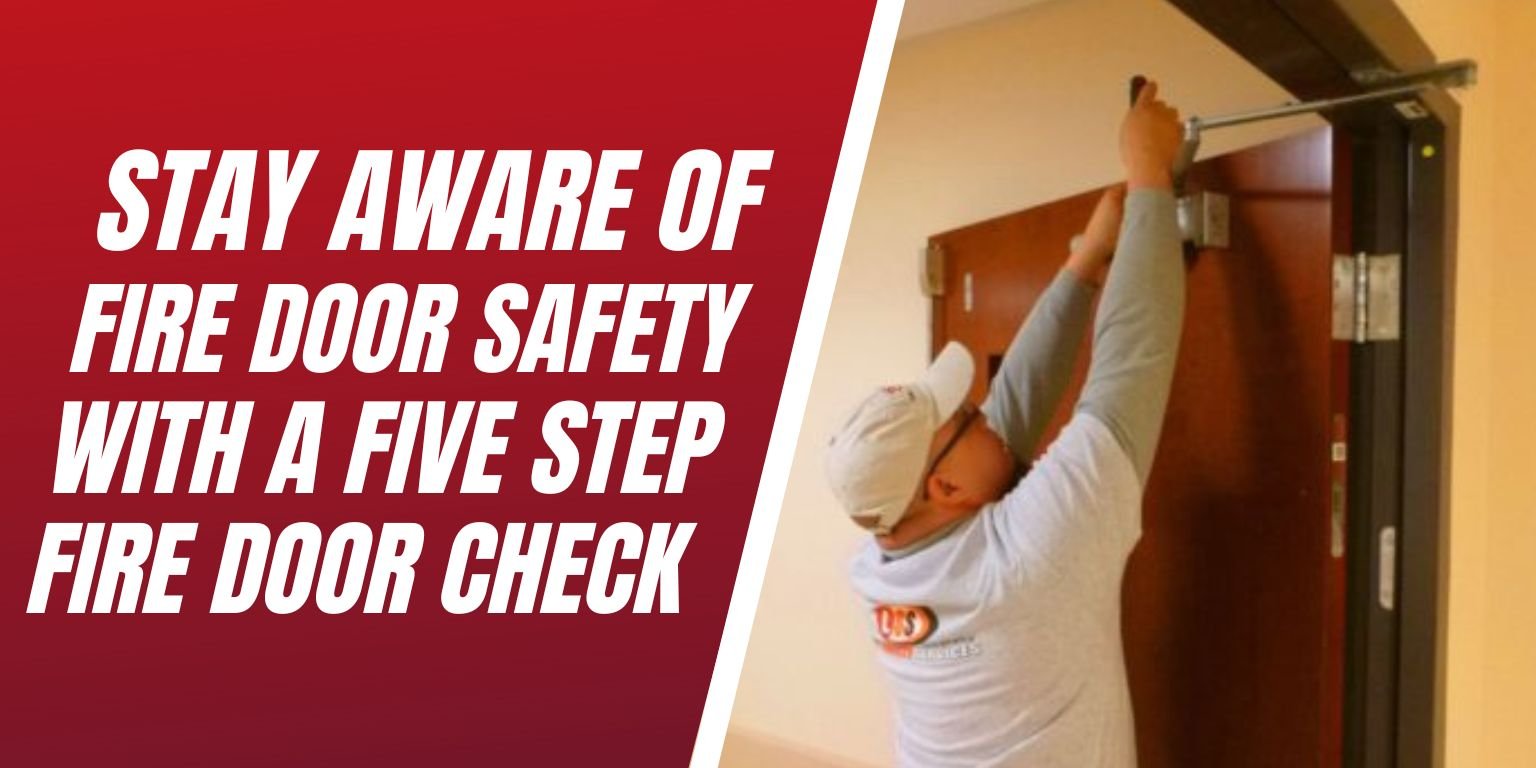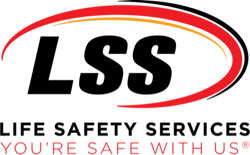
Fire doors are an important part of a building’s overall fire and life safety protection system. They have a well-thought-out design with hundreds of moving parts, which allows them to prevent fire and smoke from spreading throughout the building. Unfortunately, that means there is a higher chance for those parts to become deficient. In fact, according to the Door Safety and Security Foundation, the following items are the most commonly found deficiencies for swinging fire doors.
- Painted or missing fire door labels.
- Poor clearance dimensions around the perimeter of the door in the closed position.
- Kick down door holders.
- Auxiliary hardware items that interfere with the intended function of the door (barrel bolts and dead bolts, etc.).
- Fire doors blocked to stay in the open position.
- Area surrounding the fire door assembly blocked by furniture, equipment and/or boxes.
- Broken, defective or missing hardware items (latch bolts and/or strike plated, closer arms, cover plates, etc.).
- Fire exit hardware installed on doors that are not labeled for use with fire exit hardware.
- Missing or incorrect fasteners.
- Bottom flush bolts that do not project 1/2” into the strike.
This is why it is so important to stay aware and vigilant of your fire safety surroundings. Fire door codes have been in place for many years, but we still seem to have trouble with fire doors not being used properly. They are complex devices and require a knowledgeable professional in the field to perform an annual inspection as accurately as the National Fire Protection Association (NFPA) requires. However, there are five parts of a fire door that can be checked by anybody. So, here is a quick and easy fire door check list that should be inspected on a regular basis to help keep a building’s fire doors in compliance with NFPA’s codes and standards.
Five Step Fire Door Check
- Certification (Fire-rated door label)
Without a certification mark or label, you cannot be sure this really is a fire door. Use a mirror or the selfie function on your camera phone. - Fire Door Gaps
Too big of a gap surrounding a fire door will allow smoke and fire to travel through. You can take a coin to get a feel for the gap size surrounding the fire door. - Fire Door Seals
Fire door seals will expand if they’re in contact with heat, and will stop the fire (and in some cases smoke) moving through the cracks. Take a look at the edges of the door and frame. - Fire Door Hinges
Be sure the door has been properly maintained, and in the intensity of a fire will perform properly. Open the door and take a look at the hinges. - Fire Door Closures
A fire door only works when it’s closed. A fire door is completely useless if it’s wedged open or can’t close fully. Open the door about halfway, let go and see what happens when you allow it to close by itself.
Fire doors are an important piece in a building’s overall fire protection system. By helping to contain fire and smoke to a remote location, fire doors also provide a safe evacuation for occupants with an easy egress out of the building. If a fire door is kept open, being blocked or has been tampered with, then it will not be able to properly do its job. Don’t let fire door safety be overlooked. Spread the word about the importance of a properly used fire door and how it could help save your life when it matters most!
LSS Fire Door Inspections
LSS’ fire door inspection protocol is one of the industry’s most detailed. Not only does our certified fire door inspection team ensure that your fire doors are code compliant and are working properly but they also provide you with proof for you AHJ with the best report in the business.
LSS technicians hold multiple fire door inspection certifications from industry-best organizations such as the Door and Hardware Institute and the International Fire Door Inspector Association.
To learn more about our fire door inspections and maintenance services, Contact Us Here or call 888-675-4519

